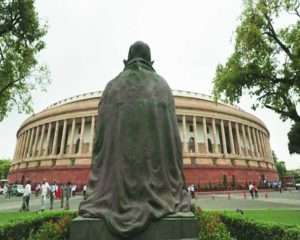Greasing the wheels of Justice
Recently on the recommendation of the Collegium of the Supreme Court (SC), four Chief Justices from the High Courts (HCs) were elevated, raising its strength to 34. While a growth in the arrears of cases in the SC and the need for their early disposal appear to be the main reasons for such a raise, its relevance arises from the fact that the apex court is the head of the judiciary in the country and for expeditious disposals, it has to set an example and formulate a strategy for speedy and less expensive delivery of justice in courts and its consequent benefits to the common man.
One thing which is most striking in the whole scenario is that our Constitution came into being in 1950, that is just about 70 years ago, while the criminal code of procedure, which regulates the procedure for investigation of cases by the police and their trial in the courts is as old as 1898, which is almost 120 years old.
An amended code was brought in 1973 but its basic structure remains the same. It is obvious that the system devised by the British Crown for the colonial administration should have been done away with, as per the aspirations of an independent country, a republican and a people- friendly Government, but for some reason we have continued to persist with this relic of the colonial period.
As the delays in courts multiply, hopes of the common man for quick and inexpensive delivery of justice continue to recede. The seriousness of the situation can be gauged from the fact that in October 2018, the present Chief Justice of India (CJI) Ranjan Gogoi had expressed that SC judges should not take leave on working days. This was more or less an exhortation to ensure better disposal.
According to rough estimates as of August 2019, there are over 3.5 crore cases pending across the SC, the HCs and the subordinate courts throughout the country. Of these, subordinate courts account for over 87.3 per cent pendency of cases, followed by 12.5 per cent pendency in the 24 HCs. The remaining 0.2 per cent of cases are pending with the apex court. The problem of pendency creates a lot of collateral damage, particularly in criminal cases, as it leads to prolongation of stay of undertrials in custody. The situation in some of the subordinate courts has almost assumed scandalous proportions as even the CJI had said at one place that “convicts are being heard in some courts after the completion of their sentence.”
It is not as if the problem of mounting arrears has not been addressed with sufficient emphasis in the past. The Arrears Committee constituted by the Government on the recommendation of the Chief Justices’ conference, had said, “the failure on the part of the Executive to produce adequate number of competent judges from time to time has substantially contributed to the mounting arrears.”
The National Commission to review the working of the Constitution (2002) had suggested that the Government should also share the concurrent obligation of meeting the expenditure of the subordinate courts and maintaining the subordinate judiciary. It had further made several recommendations, including giving priority over civil matters to criminal cases, where the accused are in custody.
Greater reliance was placed on an Alternate Dispute Resolution mechanism through Gram Nyayalayas (village courts) for rural areas and Conciliation Courts for rent and eviction suits related litigation in urban courts.
In addition, this commission had stressed that the Government being one of the biggest litigants, should carefully check the judgments from the HCs and not go to the apex court in appeals as a matter of routine, just to avoid allegations.
The commission also recommended a very ambitious strategic action plan for time-bound clearance of arrears in the jurisdiction of each HC. Despite several constructive and doable suggestions, the reform process has been slow even as pendency in the courts continues to multiply on a daily basis.
As far as court procedures are concerned, the grant of adjournments, far in excess and in routine, to advocates needs to be limited.
Once there was a strike by the advocates on some issue in a particular HC. The judges continued to adjourn the cases of striking advocates instead of going ahead with the hearings wherever both the parties were personally present. Such uncalled for adjournments are not in the overall interest of quick disposal of cases. Also, one can frequently observe that despite the pith and substance of arguments being fully covered, some of the advocates continue to speak for long durations of time perhaps for the sake of creating an impression. Courts can always fix time limits in consultation with the advocates before the proceedings actually commence, so that the arguments are pointed and confined to the issues at hand. The Law Commission has also studied this subject and made its recommendations.
Unfortunately, its 239th report, instead of focussing on the conduct of expeditious trial and reduction of arrears in courts, has dwelt more on the negligence of the police force in the country.
We are well aware that the court trial commences where the investigation ends. As such merely highlighting the deficiencies of the police department does not expedite the process of trial in court. Police reforms and separation of investigation from law and order are separate subjects of great public importance but the issue of a quick and an inexpensive trial in the court has been relegated in this report.
As the pendency of cases leads to delays in trial, it causes serious collateral damage, particularly in criminal cases. The rate of acquittal being already quite high, with lapse of time many more cases end in acquittal, which might have seen a conviction otherwise.
The rates of conviction in some of the Western democracies are quite high and it is not as if they have been convicting innocent people. In our courts, the judge mostly hears but does not involve himself beyond a limit during the course of depositions. In certain European countries like France and Germany, an inquisitorial system is followed where the judge can pull up the investigator and ask for gaps to be filled. The trial judge can also question the accused and draw an adverse inference in case he remains silent and does not explain himself.
This is also relevant in borderline cases where there is a very thin difference between a cognisable and non-cognisable offence. In our case, the Article 20 (3) of the Constitution needs to be amended accordingly. Our courts follow the principle of “proof beyond reasonable doubt” for a conviction. On the other hand if this is changed to “if the court is convinced that it is true”, trials would be expedited with better results for the prosecution. Some of these measures had earlier been suggested by a committee constituted by the Ministry of Home Affairs but most of its recommendations are yet to be implemented. A reclassification of crimes for trial of offences under the social welfare code, correctional code, economic and other white collar crimes, criminal code, organised crime and terrorism, also needs to be considered. It may be easily observed that merely raising the strength of the judicial officers may not be enough for quick delivery of justice to the common man as the system calls for changes in vital areas.
(The author is a former Governor and a senior advisor at the Pranab Mukherjee Foundation)



